Defenders of the Serbian sky. How was created the aircraft of the Kingdom of Serbia
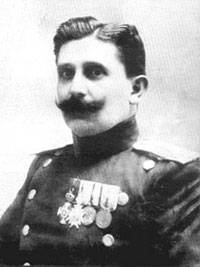 Only in 1901 did the Serbian government take the first step towards the creation of a national air force. The captain-engineer Kosta Miletic (1874-1953) was sent to the Russian Empire for the course of aviation training. In 1892-1895 Costa Miletic has studied at the Military Academy, becoming the fifth graduate of the school. Two years after graduating from the academy, he served in the infantry, and then transferred to engineering troops. As a person who is technically competent and capable, they decided to send him to study in Russia. So the young Serbian captain became the first military pilot in the country. In Russia, Miletich did not just attend classes at the flight school, but successfully mastered her programs and took second place among the cadets.
Only in 1901 did the Serbian government take the first step towards the creation of a national air force. The captain-engineer Kosta Miletic (1874-1953) was sent to the Russian Empire for the course of aviation training. In 1892-1895 Costa Miletic has studied at the Military Academy, becoming the fifth graduate of the school. Two years after graduating from the academy, he served in the infantry, and then transferred to engineering troops. As a person who is technically competent and capable, they decided to send him to study in Russia. So the young Serbian captain became the first military pilot in the country. In Russia, Miletich did not just attend classes at the flight school, but successfully mastered her programs and took second place among the cadets. Returning to Serbia in November 1902, Miletic was assigned to the engineering department of the Military Ministry. Inspired by the Russian experience, he proposed to the command to create its own balloon department at the headquarters of the Serbian army. But this idea was not considered as serious, and only a year and a half later, in 1904, some high-ranking officers of the Serbian army liked the proposal of Captain Miletic. This was facilitated by the fact that for a whole year Miletic served as a duty officer at the headquarters of King Peter and had the opportunity of direct access to senior military leaders, including the Minister of War of Serbia. As a result of a long discussion, it was decided to order two balloons. After the end of the service at the court, Miletić was appointed to the main railway department of the General Staff, who was responsible not only for the railway traffic, but also for the pigeon mail and balloons.
In 1909, it was finally decided to buy two balloons to create an aeronautic unit of the Serbian army. Orbs ordered in Augsburg. It was one ball "Draken" and two balls "Serbia" and "Bosnia and Herzegovina". 19 April, 1909, the first balloon flight took place - captain Costa Miletic took off in a Serbian balloon. In fact, this flight was the first step to the creation of a national air force.
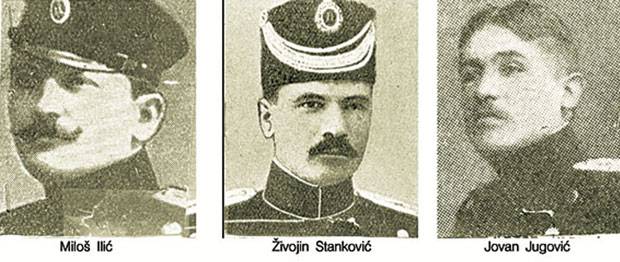
Before the start of the Balkan Wars, the command of the Serbian army accelerated the pace of the creation and development of military aviation. By this time, the main potential opponent of the Serbian army - the army of the Ottoman Empire - also diligently acquired its own air force. This forced the Serbian command to take the development of military aviation more seriously. At the end of May, 1912 of the year passed a competitive selection of Serbian military personnel for training in Louis Bleriot and Maurice Farman aviation schools in France. A candidate from the number of officers and non-commissioned officers of the Serbian army participated in the competition 171. In total, six people were selected - three officers and three non-commissioned officers. These were: infantry lieutenant Milos Ilic, lieutenant engineer Jovan Jugovic, artillery lieutenant Zivoin Stankovic, cavalry patron (sergeant) Mikhailo Petrovich cavalry, infantry commander Miodrag Tomić and artillery patron Voislav Novichich. Since they did not speak French, they were immediately admitted to practical training. The first diploma of the pilot was received by Michaela Petrovich, who became the owner of an international pilot license. Mikhailo Petrovich was born in 1884, graduated from the Military-craft school and in 1902, he tried to enter the Military Academy in St. Petersburg, but he failed. Petrovich was forced to enter the Serbian army in the non-commissioned officer position. He served in the artillery regiment in Nis, in 1910, he was given the rank of naremnik (sergeant). When the selection began wishing to become pilots, Petrovich responded one of the first. Unlike stories With the admission to the academy, here the luck smiled at the 28-year-old jugger and he successfully passed the selection and then the course in France.
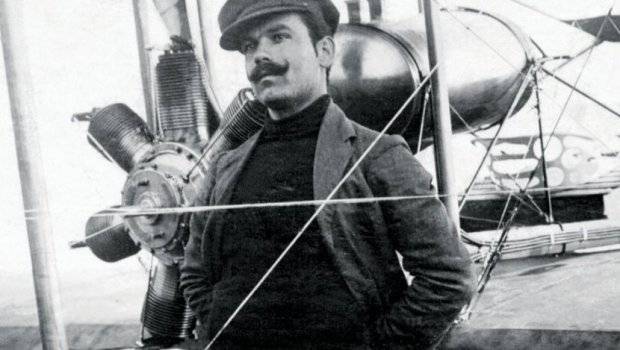
However, in September 1912, all Serbian military had to stop training and return to Serbia due to the outbreak of the First Balkan War. 24 December 1912 was officially established military aviation of the Kingdom of Serbia. Thus, Serbia was one of the fifteen countries in the world that had acquired its own air force by that time, and one of the first five countries in the world whose aircraft took part in hostilities. However, compared with the same neighboring Bulgaria, Serbian aviation was much weaker. The aeronautical company included: a squadron of airplanes from 12 airplanes, a balloon compartment with two tied balloons and one free balloon, a hydrogen station, a pigeon post office. The commander of the aviation team was appointed Major Costa Miletic. The first military airfield was opened near Niš - on the Trupalese field. Major Miletić immediately began training pilots and service personnel of the Serbian military aviation.
Meanwhile, even before the aviation command was officially established, the First Balkan War began in October 1912. It was during this armed conflict that Serb aviation received its first baptism of fire. In the very first days of the war, the Serbian army seized an important cargo - two REP aircraft that were flying from France to the Ottoman Empire. So the aviation arsenal of the kingdom was replenished with two more cars.
- Ilic, Stankovic and Tomic
In February 1913, the command of the Serbian army decided to create naval aviation to support Montenegrin ground forces fighting against Ottoman troops on the Adriatic coast. This is how the coastal aviation squadron appeared, which included four aircraft - single and double Blerio XI, Deperdisen and Farman 20. The commander of the squadron was appointed all the same Costa Miletic, at the same time commanding the entire Serbian aviation. Under his command were five pilots. In addition, several Russian and French volunteer pilots were recruited for service in Serbian aviation. Another 1 November, 1912, from Russia, pilot A.A. arrived in Serbia from Russia. Agafonov and mechanic V.F. Saveliev with a Dux biplane. They were seconded to the Assistant Commander of the Serbian army, General Putnik. In December, 1912, Agafonov and Savelyev were included in the aviation department. Agafonov and Savelyev were tasked to check the captured REP planes. 2 February 1913, the Russian pilots flew from Nis to Belgrade, but at the final stage of the flight the plane crashed. After that, it was decided to abandon the use of captured REP aircraft.
Four airplanes, five pilots and about thirty service personnel were sent on a ship to the port liberated by the Greek army. The Turkish ships attacked the Serbian steamer, but the Serbs still managed to get the airplanes to their destination, although not without losses.
March 20 The first reconnaissance flights were conducted on March 1913. During the first reconnaissance flight on an airplane, Farman HF-20 killed Pettyevich, who became the first dead pilot in the history of Serbian military aviation. However, the very next day the pilots, Lieutenant Stankovic and the bullyman Tomic, conducted successful reconnaissance flights over the front line. Then the aircraft Stankovich, Tomich and Ilic dropped small bombs on enemy positions. In early April, a cease-fire agreement was signed. After that, the French volunteers left Serbia. Their colleagues from among the Serbian officers believed that the French served in bad faith, sought to avoid combat sorties in every possible way. After the resumption of hostilities, Serbian aviation took part in them without the French pilots. At the end of February, Russian pilots Agafonov and Savelyev went home 1913. As for the Serbian officers, they received well-deserved awards. Lieutenants Milos Ilic, Jovan Yugovic and Stankovic were promoted to captains in their ranks. Jovan Yugovic was appointed commander of the aeronautical company, and Captain Miloš Ilić was appointed commander of the aviation squadron.
The next combat use of Serbian aviation followed during the Second Balkan War, in which Serbia had to fight against yesterday’s ally Bulgaria, which was a rival to the Serbian kingdom for possession of the Macedonian lands. Bulgarian aviation was prepared and equipped far better than Serbian aviation. However, Serbian aircraft conducted reconnaissance flights over enemy positions. For Bulgaria, the Second Balkan War ended in complete defeat, because the Bulgarian army simply could not resist a broad coalition, which included not only Serbia and Montenegro, but also Romania, and even the Ottoman Empire, which chose to immediately engage in hostilities on the side of yesterday’s opponents to fight off back a piece of territory captured by Bulgaria after the First Balkan War. Therefore, despite the superiority of Bulgaria in the air, the Bulgarian land army was defeated by the combined forces of the opponents.
The next stage of development of the Serbian military aviation fell on the First World War. On the eve of the start of the war, the Serbian army had an aviation squadron of 9 airplanes, of which 7 were in flightable condition. Initially, the aviation task was to search for enemy bridgeheads. 27 August 1914, the first collision in the air of a Serbian plane with an Austro-Hungarian aircraft occurred.
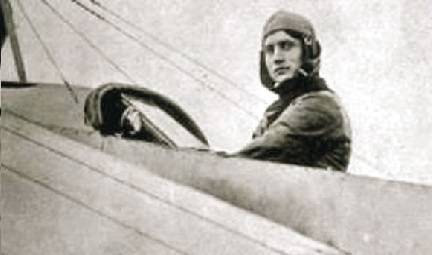 Since the Serbian aircraft, which was controlled by the pilot Tomic (in the photo), was not armed, he had to make a landing. After this collision, Serbian planes more than once engaged in air combat with Austro-Hungarian aircraft, firing carbines and revolvers. Austro-Hungarian aviation had a great air superiority, therefore, in order to at least slightly improve the position of the Serbian air forces, in March 1915 from France arrived additional aircraft. The French squadron was responsible for the front sector from Smederevo to Loznitsa, and the Serbian squadron from Smederevo to Golubac. The first Serbian armed aircraft was one of the Bleriot aircraft, on which a standard machine gun was installed. In 1915, the first flight school of the Serbian aviation was founded in Pozarevac. 9 and 23 June 1915. Serbian pilots made victories in aerial combat with Austro-Hungarian aircraft.
Since the Serbian aircraft, which was controlled by the pilot Tomic (in the photo), was not armed, he had to make a landing. After this collision, Serbian planes more than once engaged in air combat with Austro-Hungarian aircraft, firing carbines and revolvers. Austro-Hungarian aviation had a great air superiority, therefore, in order to at least slightly improve the position of the Serbian air forces, in March 1915 from France arrived additional aircraft. The French squadron was responsible for the front sector from Smederevo to Loznitsa, and the Serbian squadron from Smederevo to Golubac. The first Serbian armed aircraft was one of the Bleriot aircraft, on which a standard machine gun was installed. In 1915, the first flight school of the Serbian aviation was founded in Pozarevac. 9 and 23 June 1915. Serbian pilots made victories in aerial combat with Austro-Hungarian aircraft. In 1915, 12 signal stations were also formed. During the enemy’s invasion of Serbian territory in October 1915, Serbian pilots and French volunteers made a large number of combat missions. The first air evacuation operation in world history is connected with Serbian aviation - the wounded and sick were transported on a Farman plane through the territory of Albania and Montenegro. By January 1916, the Serbian aviation consisted of 4 balloons and 21 aircraft. Six aircraft by this time were captured by the enemy, and eleven aircraft - shot down or crashed. After the territory of Serbia was occupied by enemy troops, the Serbian military aviation virtually ceased to exist. However, since most pilots and technicians managed to retreat along with the main forces of the Serbian army, in the same year 1916 began the restoration of the Serbian air force with the active participation of France.
Serbian air force personnel were relocated to Corfu, where an organizational renewal of aviation took place. An aviation squadron was created as part of 132 people. Major Kosta Miletic was appointed commander of the squadron, Jovan Yugovich, 1 class captain, Miloh Ilić, captain of 2 class, and Captain Zivoin Stankovich, depot commander, were appointed as his deputy. Arriving at the Front of Thessaloniki, the Serbian aviation was subordinated to the command of the French Air Force. Nevertheless, the Serbian leadership hoped that sooner or later a squadron would be formed, which would be completely under the Serbian command. In 1916-1918 5 of the mixed French-Serb squadrons operated in the Serbian front. At the end of May 1916, the last Serb troops were redeployed from Corfu to Thessaloniki. In the summer of 1916, additional training for Serbian aviation personnel was conducted. Up until the end of World War I, the Serbian military aircraft operated in close contact with the French air force.
The end of the First World War brought about large-scale changes in the political map of the world. The Austro-Hungarian and Ottoman empires ceased to exist. In Eastern Europe, a whole series of new states appeared. One of them was the united Kingdom of Serbs, Croats and Slovenes, which included Serbia, which became its foundation. Thus, the Serbian armed forces became the main base for the formation of the armed forces of the new state, and on the basis of the Serbian military aviation, the aviation of the Kingdom of Serbs, Croats and Slovenes (then Yugoslavia) was created.
The first Serbian pilot, Kosta Miletić, who commanded Serbian aviation until 1916, retired in the rank of colonel in 1921 and, before the Second World War, led the Association of Reserve Pilots. The founder of Serbian aviation died already in old age - in 1953. Jovan Yugovic, who served as a lieutenant colonel after World War I, was tragically killed in the 1926 year when the plane crashed. Another Serbian aviation pioneer, Zhivoin Stankovic, who served as captain of aviation, died of malaria in 1918. Back in 1917, Lieutenant Vojislav Novichich died. Miloš Ilić retired with the rank of captain of the 1 class and safely lived to old age, having died in the 1960 year. Miodrag Tomic, who died in the US in 1962, lived to old age.
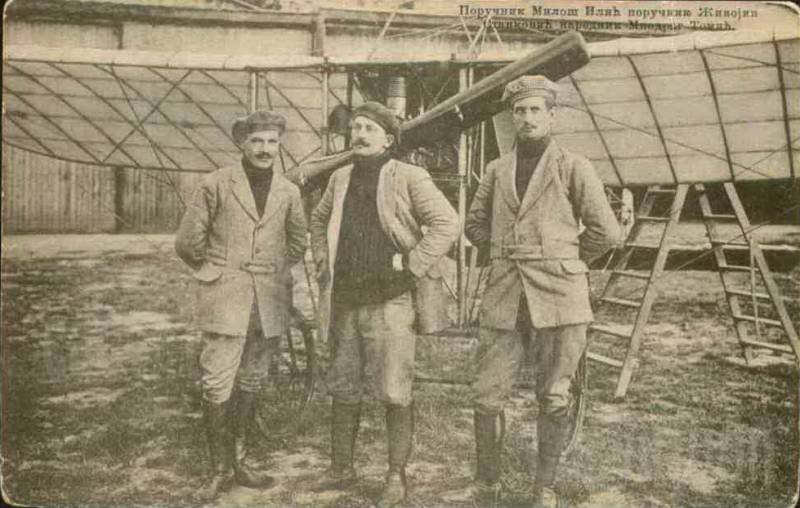
Information